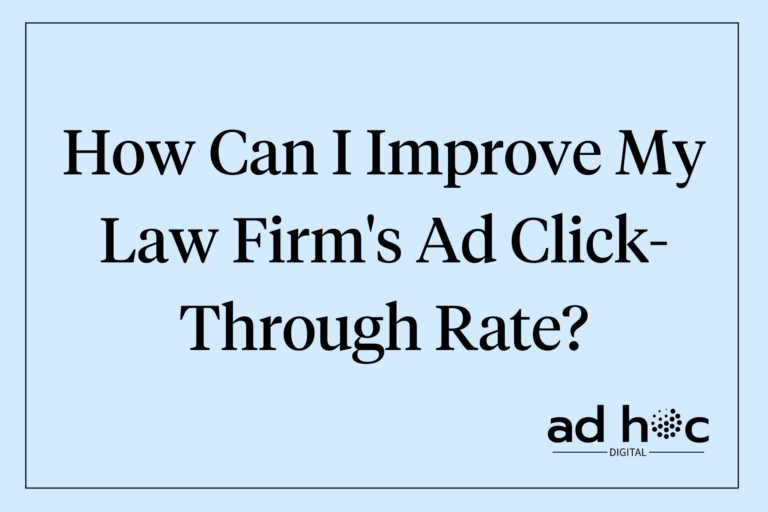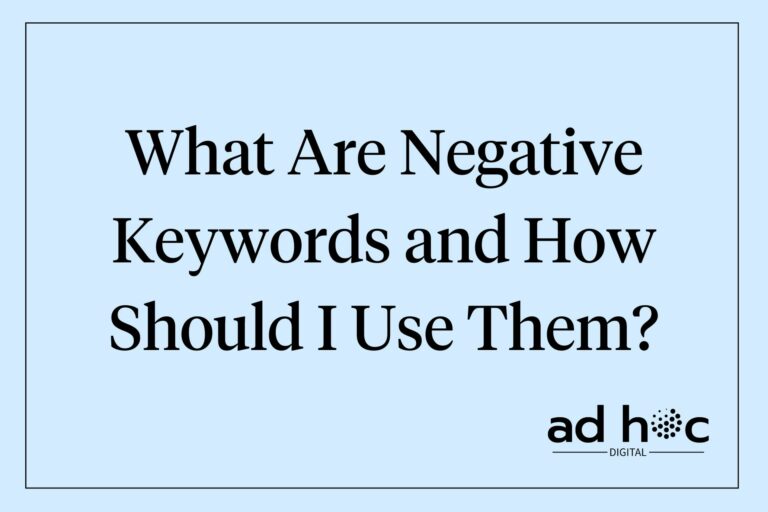How Can I Effectively Test and Optimize Ad Copy for My Google Ads Campaigns?
Ad copy is a crucial element of your Google Ads campaigns, as it directly influences user engagement and conversion rates. Testing and optimizing your ad copy can lead to higher click-through rates (CTR), better ad performance, and increased return on investment (ROI). This detailed guide will explain how to effectively test and optimize ad copy for your Google Ads campaigns, ensuring you get the best results.
Build your campaign knowledge with our essential guide on effective Google Ads campaigns for lawyers.
Understanding the Basics of Ad Copy
Definition of Ad Copy
Ad copy in Google Ads refers to the text that appears in your ads, including headlines, descriptions, and calls-to-action (CTAs). It is designed to attract users’ attention and encourage them to click on your ad.
Elements of Ad Copy
- Headlines: The main text that grabs attention.
- Descriptions: Additional information that supports the headline and provides more context.
- Call-to-Action (CTA): A prompt that encourages users to take a specific action, such as “Call Now” or “Get a Free Consultation.”
For more on writing compelling ad copy, visit effective Google Ads copy for lawyers.
Setting Goals and Metrics
Identifying Goals
Before testing your ad copy, define what success looks like. Common goals include:
- Higher click-through rates (CTR)
- Increased conversions
- Improved quality scores
Key Metrics to Track
- Click-Through Rate (CTR): The percentage of users who click on your ad after seeing it.
- Conversion Rate: The percentage of users who complete a desired action after clicking on your ad.
- Quality Score: Google’s rating of the relevance and quality of your ads and keywords.
For more on tracking performance, visit tracking Google Ads performance for lawyers.
Creating Ad Variations
Headline Testing
Craft different headlines to see which ones resonate best with your audience. Focus on clarity, relevance, and strong CTAs.
Description Testing
Write multiple descriptions to compare their effectiveness. Highlight unique selling points and benefits to attract potential clients.
CTA Testing
Experiment with different CTAs to determine which ones drive the most engagement. Phrases like “Call Now,” “Learn More,” or “Get Started Today” can be tested.
For more on creating effective ad copy, visit effective Google Ads copy for lawyers.
Using A/B Testing for Ad Copy
Setting Up A/B Tests
A/B testing involves comparing two versions of an ad to see which performs better. To set up A/B tests in Google Ads:
- Create two variations of your ad with one differing element (e.g., headline or CTA).
- Run both ads simultaneously.
- Analyze the performance data to determine which ad is more effective.
Choosing Variables
Decide which elements to test, such as:
- Headlines
- Descriptions
- CTAs
- Ad extensions
Interpreting Results
Analyze the data from your A/B tests to identify the best-performing ad variations. Use these insights to refine your ad copy and improve overall campaign performance.
For more on making data-driven adjustments, visit A/B testing in Google Ads for lawyers.
Utilizing Responsive Search Ads (RSAs)
Benefits of RSAs
Responsive Search Ads (RSAs) provide flexibility and automation in ad copy testing. They allow you to input multiple headlines and descriptions, and Google automatically tests different combinations to determine the best-performing ads.
Creating RSAs
To create effective RSAs:
- Add multiple headlines (up to 15) and descriptions (up to 4).
- Ensure variety in your ad copy to allow Google to test different combinations.
- Use relevant keywords and strong CTAs in your headlines and descriptions.
Optimizing RSAs
Regularly analyze the performance of your RSAs and make adjustments based on the results. Use the data to refine your ad copy and improve ad relevance and performance.
For more on setting up and optimizing RSAs, visit responsive search ads for lawyers.
Leveraging Ad Extensions
Types of Ad Extensions
Ad extensions provide additional information and enhance your ad’s visibility. Common ad extensions include:
- Sitelinks: Links to specific pages on your website.
- Callouts: Highlight key benefits or features.
- Structured Snippets: Provide more context about your services.
Incorporating Extensions into Testing
Include ad extensions in your testing strategy to see how they impact ad performance. Test different combinations of extensions to find the most effective setup.
Evaluating Extension Performance
Monitor the performance of your ad extensions using Google Ads reports. Adjust your extensions based on their impact on CTR and conversion rates.
For more on using ad extensions, visit Google Ads ad extensions for lawyers.
Analyzing Performance Data
Regular Performance Reviews
Set a schedule for reviewing your ad performance, such as weekly or monthly. Regular reviews help you stay on top of trends and make timely adjustments.
Using Google Ads Reports
Leverage built-in reports in Google Ads to gain insights into your ad performance. Key reports to review include:
- Ad Performance Report: Provides data on individual ad performance.
- Search Terms Report: Shows the actual search queries that triggered your ads.
Adjusting Based on Data
Use the insights from your performance data to make informed adjustments to your ad copy. Continuous optimization ensures that your ads remain effective and relevant.
For more on tracking and analyzing performance, visit tracking Google Ads performance for lawyers.
Continuous Optimization Strategies
Iterative Testing
Continuously test and refine your ad copy to keep improving performance. Iterative testing involves making small, incremental changes and measuring their impact.
Staying Updated with Trends
Keep up with changes in user behavior and Google Ads features. Staying informed allows you to adapt your strategies and maintain optimal performance.
Learning from Competitors
Analyze competitor ads to gain insights and identify areas for improvement. Learning from your competitors can help you develop more effective ad copy.
For more on optimizing performance, visit Google Ads competitive analysis for lawyers.
Conclusion
Effectively testing and optimizing ad copy is crucial for maximizing the performance of your Google Ads campaigns. By setting clear goals, creating ad variations, using A/B testing, leveraging responsive search ads and ad extensions, and continuously analyzing performance data, you can refine your ad copy and achieve better results. Implementing these strategies will help your law firm attract more clients and improve your overall advertising ROI.
Additional Resources
- Effective Google Ads campaigns for lawyers
- Improving Google Ads CTR for law firms
- Tracking Google Ads performance for lawyers
- A/B testing in Google Ads for lawyers
- Effective Google Ads copy for lawyers
- Google Ads competitive analysis for lawyers
- Responsive search ads for lawyers
- Google Ads ad extensions for lawyers
Appreciate the read? Join our newsletter for valuable weekly resources. For more information about our services, complete the form at the bottom of the page, and we’ll get back to you soon.



